Thang Long Water Puppet Theatre offers a mesmerizing and unique cultural experience that allows visitors to immerse themselves in the rich traditions of Vietnam. This ancient art form, which dates back to the 11th century, showcases the creativity and ingenuity of Vietnamese puppeteers. The water puppet shows at Thang Long Theatre provide a window into the local culture, captivating both young and old audiences alike.
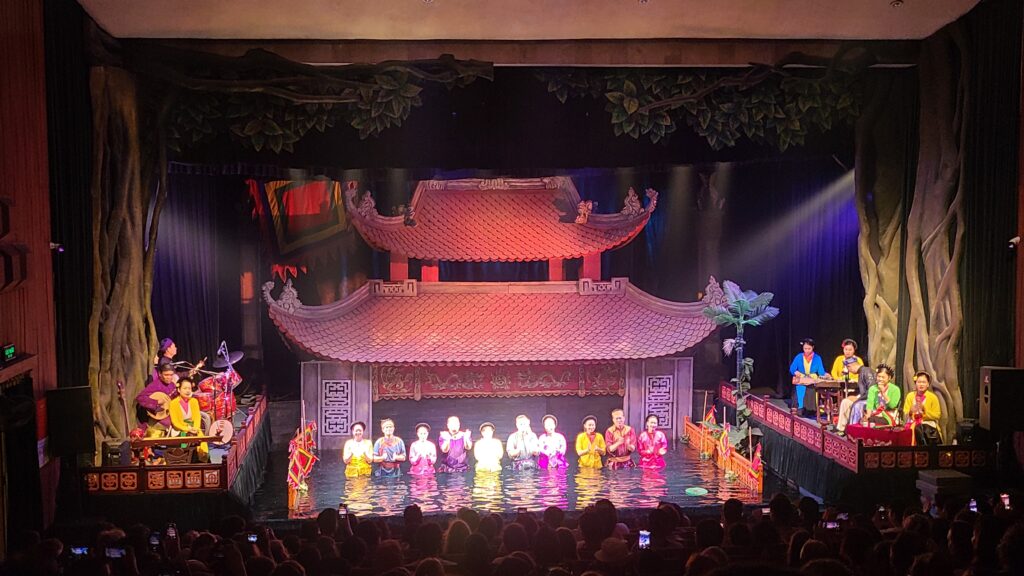
A Brief History of Water Puppetry
Water puppetry has its origins in the villages of the Red River Delta region in northern Vietnam. It was initially performed during the annual rice harvest festivals, where farmers would gather to celebrate and entertain each other. The shows were held in flooded rice fields, creating a unique underwater stage for the puppets.
Over time, water puppetry evolved from a folk art form to a show enjoyed by royalty. During the 12th century, under the reign of the Lý Dynasty, the best water puppet troupes were selected to entertain the king and his guests, elevating the art’s social status. Today, water puppetry is recognized as a cherished intangible cultural heritage of Vietnam.
The Art of Water Puppetry
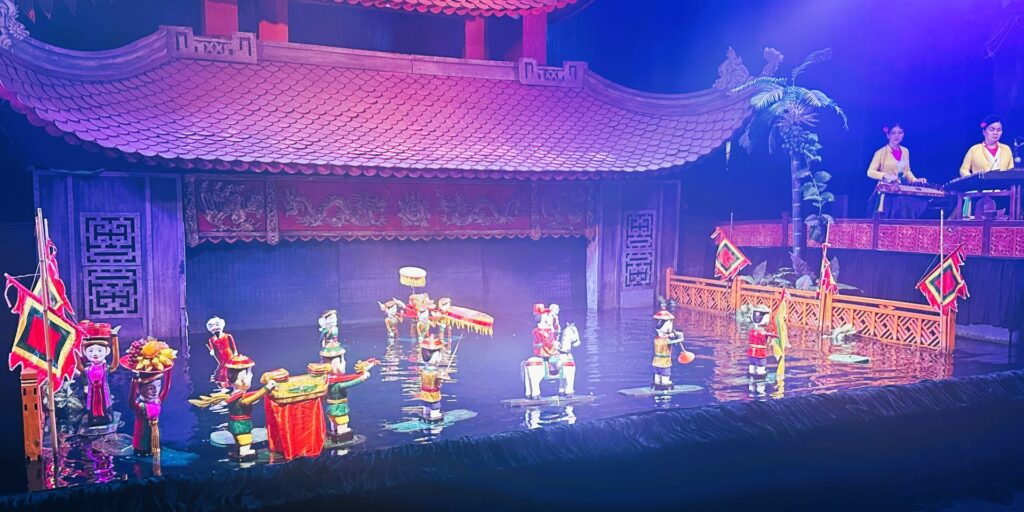
Water puppetry is a physically demanding craft that requires years of training to master. The puppets, made of buoyant fig wood and lacquered for durability, are skillfully manipulated by puppeteers who stand in waist-deep water throughout the performance. The movements of the puppets are synchronized with the music and storytelling, creating a captivating visual spectacle.
The shows are accompanied by a traditional Vietnamese orchestra, which provides the background music for the performances. Singers of Cheo, a form of opera originating from North Vietnam, sing songs that narrate the stories being acted out by the puppets. The combination of music, singing, and puppetry creates a multi-sensory experience for the audience.
Scenes and Characters
Thang Long Water Puppet Theatre showcases a variety of scenes and characters that depict daily life in Vietnam’s northern villages. Each scene tells a story, often with a moral or cultural significance. Let’s explore some of the most iconic scenes and characters featured in the water puppet shows:
1. Tễu – The Comedic Host

One of the most notable characters in water puppetry is Tễu, the comedic host. Tễu is a whimsical storyteller who introduces the audience to different scenes and stories throughout the show. With his witty comments and humorous demeanor, Tễu adds a touch of lightheartedness to the performances.
2. Dragon Dance and Phoenix Dance

The dragon is considered an important symbol in Vietnamese folk culture, representing strength and prosperity. The dragon dance is a dynamic and energetic performance that showcases the agility and coordination of the puppeteers. In contrast, the phoenix dance symbolizes fidelity in married life and is often performed by a pair of puppets, a male and a female.
3. Agriculture and Rice Planting
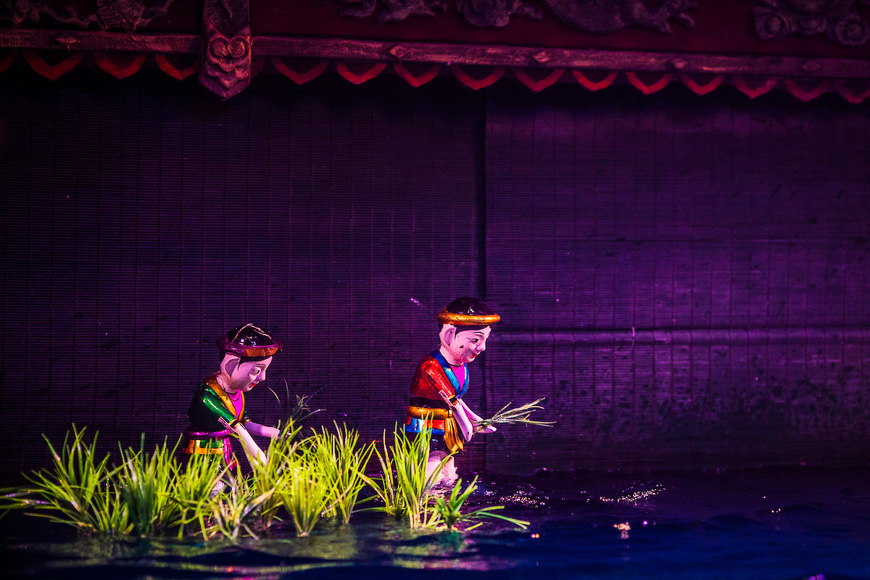
Vietnam’s agricultural heritage is beautifully portrayed in the water puppet shows. Scenes depicting plowing, slapping water, and harvesting reflect the hard work and dedication of Vietnamese farmers. The puppets bring to life the spirit of the countryside and highlight the importance of rice cultivation in Vietnamese culture.
4. Fishing and Frog Fishing

Fishing is not only a livelihood but also a leisure activity for Vietnamese farmers. The water puppet shows feature scenes of fishermen in small boats, casting their nets and catching fish. Additionally, the humorous story of frog fishing entertains the audience with its comedic depiction of a farmer’s fishing trip.
5. Chasing the Fox
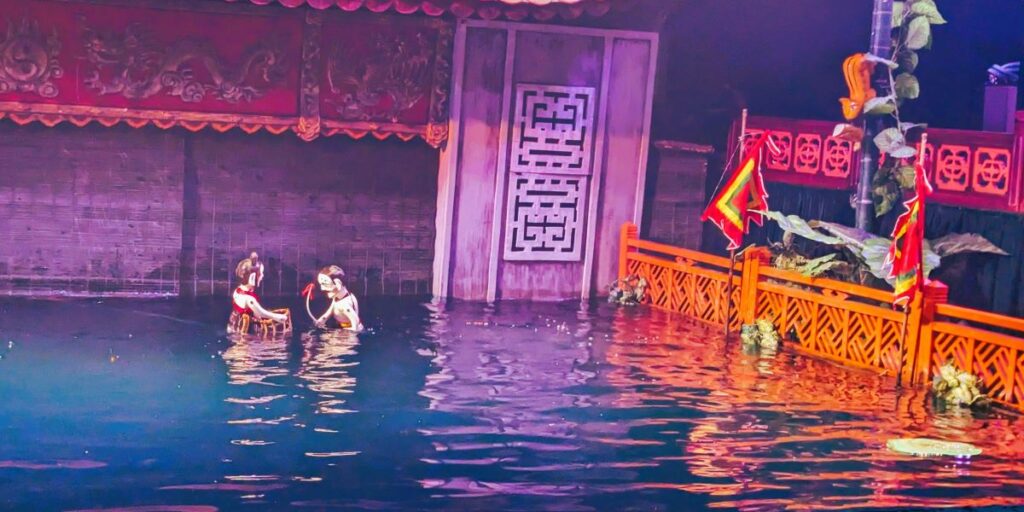
This scene tells the story of an elderly couple who must protect their ducks from a sly fox. The puppeteers skillfully bring this tale to life, showcasing the couple’s determination and resourcefulness in chasing away the fox. It is a heartwarming and humorous depiction of rural life in Vietnam.
6. Royal Parades and Boat Rowing

The water puppet shows also feature grand royal parades, with puppets dressed in elaborate costumes and accompanied by the music of the traditional orchestra. These scenes offer a glimpse into the pomp and splendor of Vietnamese royal culture. Boat rowing scenes depict the skill and teamwork required in traditional Vietnamese water transportation.
Where to Experience Thang Long Water Puppet Theatre

To fully appreciate the art of water puppetry, a visit to Thang Long Water Puppet Theatre is highly recommended. Located in Hanoi, this renowned theatre offers captivating performances that showcase the best of Vietnamese water puppetry. The shows are held in a specially designed pool, providing a stunning backdrop for the performances.
For a deeper understanding of water puppetry, a visit to Đào Thục Village, on the outskirts of Hanoi, is a must. Here, you can explore one of the last remaining water puppet workshops in Vietnam and learn about the intricate process of making the puppets. The village also hosts outdoor performances that honor the 300-year-old tradition of water puppetry.
If you’re visiting other cities in Vietnam, there are several water puppet theatres worth exploring. The Vietnam Puppet Theatre in Hanoi, Hội An Theatre in Hội An, Huế Water Puppet Theatre in Huế, and Golden Dragon Water Puppet Theatre in Ho Chi Minh City all offer exceptional shows that highlight the beauty and cultural significance of water puppetry.
Conclusion
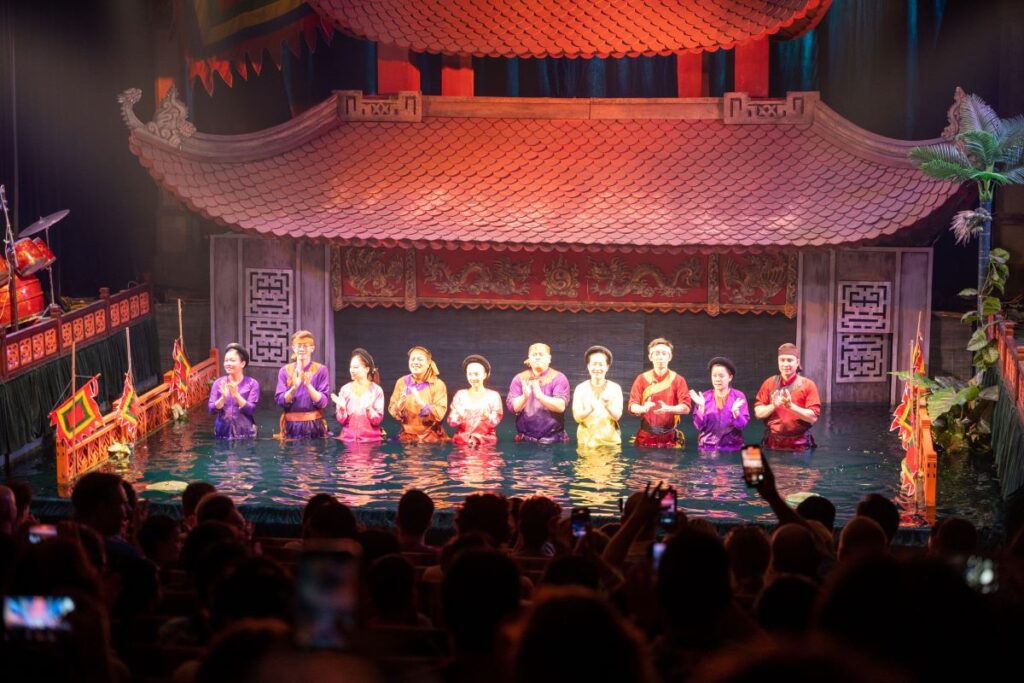
Thang Long Water Puppet Theatre is a must-visit destination for anyone seeking a unique and immersive cultural experience in Vietnam. The water puppet shows transport audiences to a world of tradition and folklore, showcasing the creativity and skill of Vietnamese puppeteers. From scenes depicting daily village life to grand royal parades, each performance at Thang Long Water Puppet Theatre is a testament to the rich cultural heritage of Vietnam. Don’t miss the opportunity to witness this captivating art form and create lasting memories of your visit to Vietnam.

